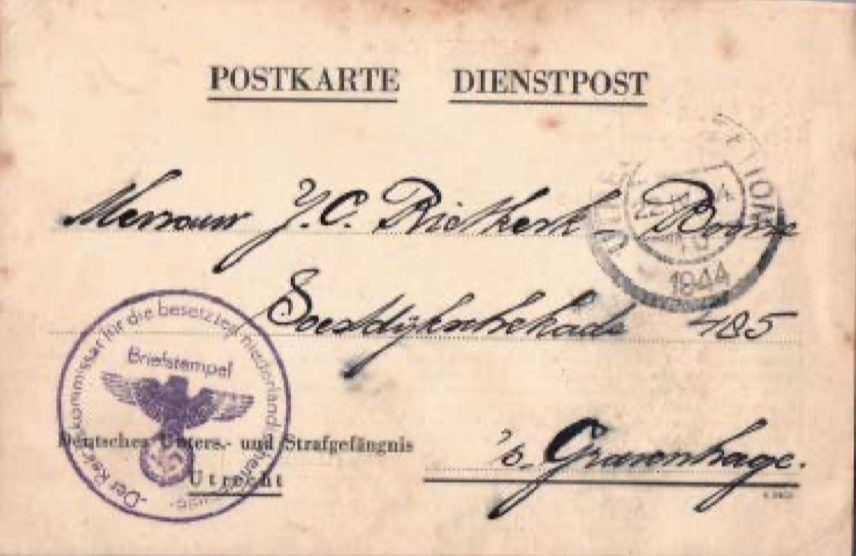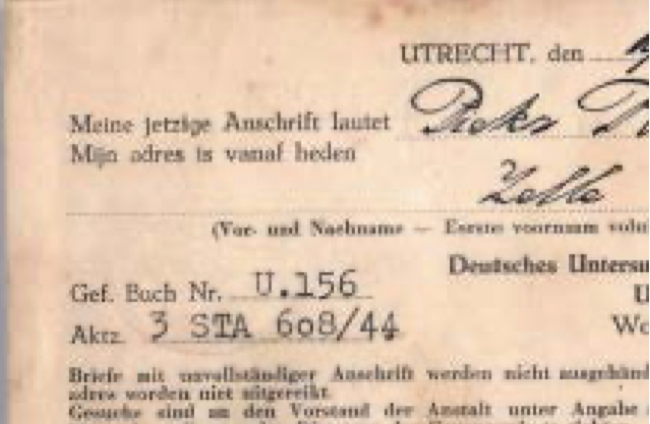Concentration Camp Amersfoort
Outgoing Mail – Domestic
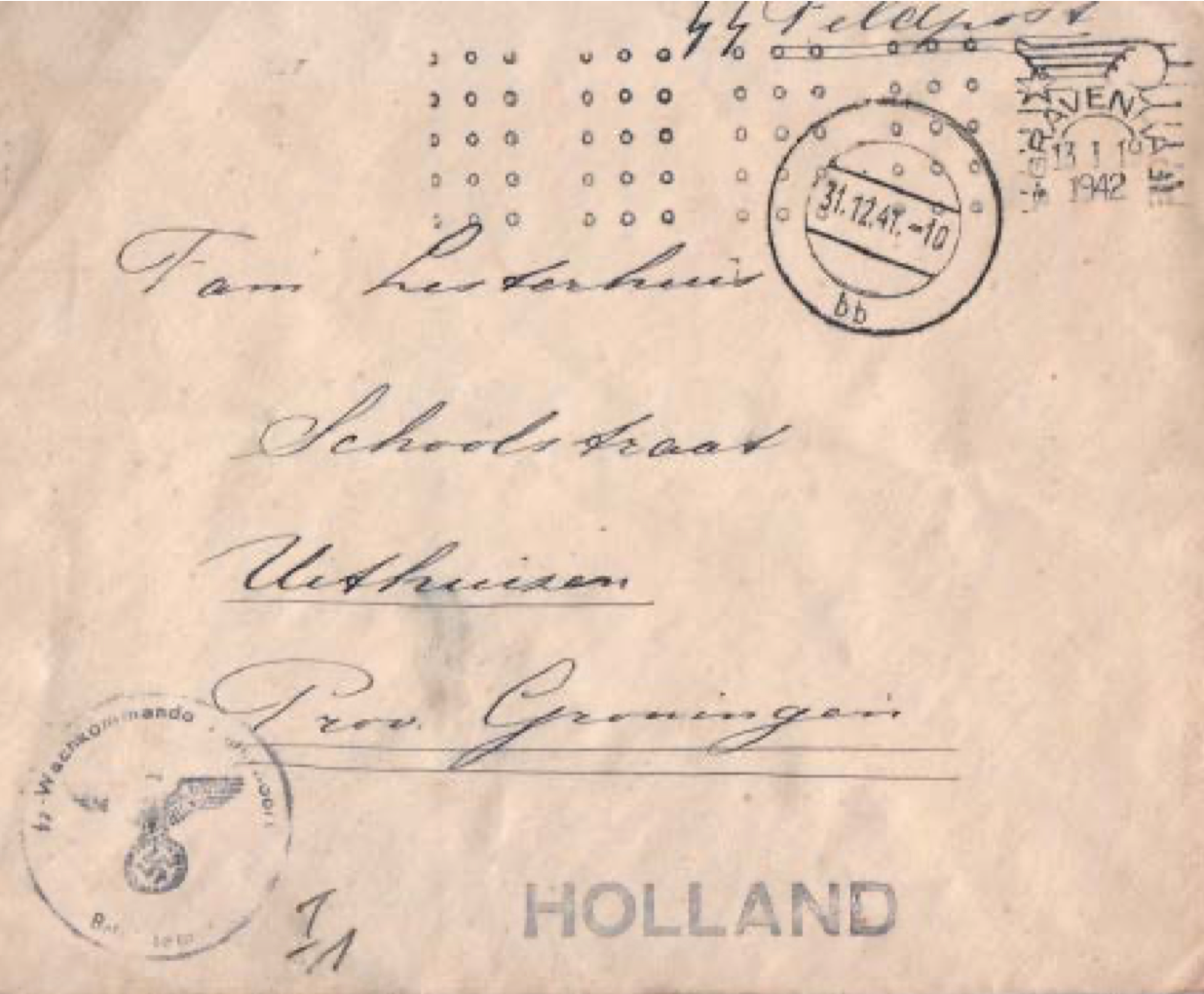
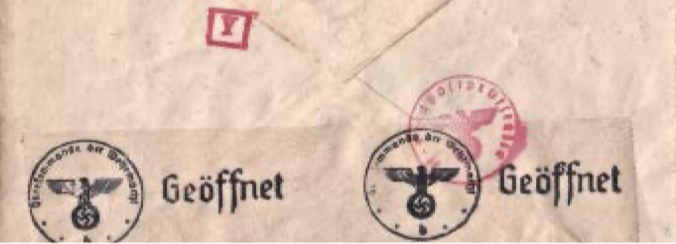
Letter from Camp Amersfoort to Uithuizen, near Groningen. Sent by a Dutch volunteer in the SS Wachkommando, a unit that largely consisted of Ausland-Deutsche, German nationals who lived in Holland. The Wachkommando was later used in military operations, including the Battle of Arnhem. Although the letter was sent by a Dutch SS volunteer, it was nevertheless opened by the SS censor in Berlin.
Camp Amersfoort official designation as Polizeiliches Durchgangslager or Police Transit Camp is misleading. Camp Amersfoort could just as easily be described as a penal or labor camp. Opened on August 18, 1941, it was run by the German Security Police and held a mixture of Jews, political prisoners, Jehova Witnesses and others. Camp Amersfoort was a brutal place, deservedly notorious for the sadism of its guards, particularly towards Jewish inmates. Following the invasion of Russia in June 1941, the camp held about 1,000 Uzbek and Soviet POWs, all of whom died of hardship or were executed in nearby woods. Little is known about the camp workings, as most prisoners were not allowed to send mail.
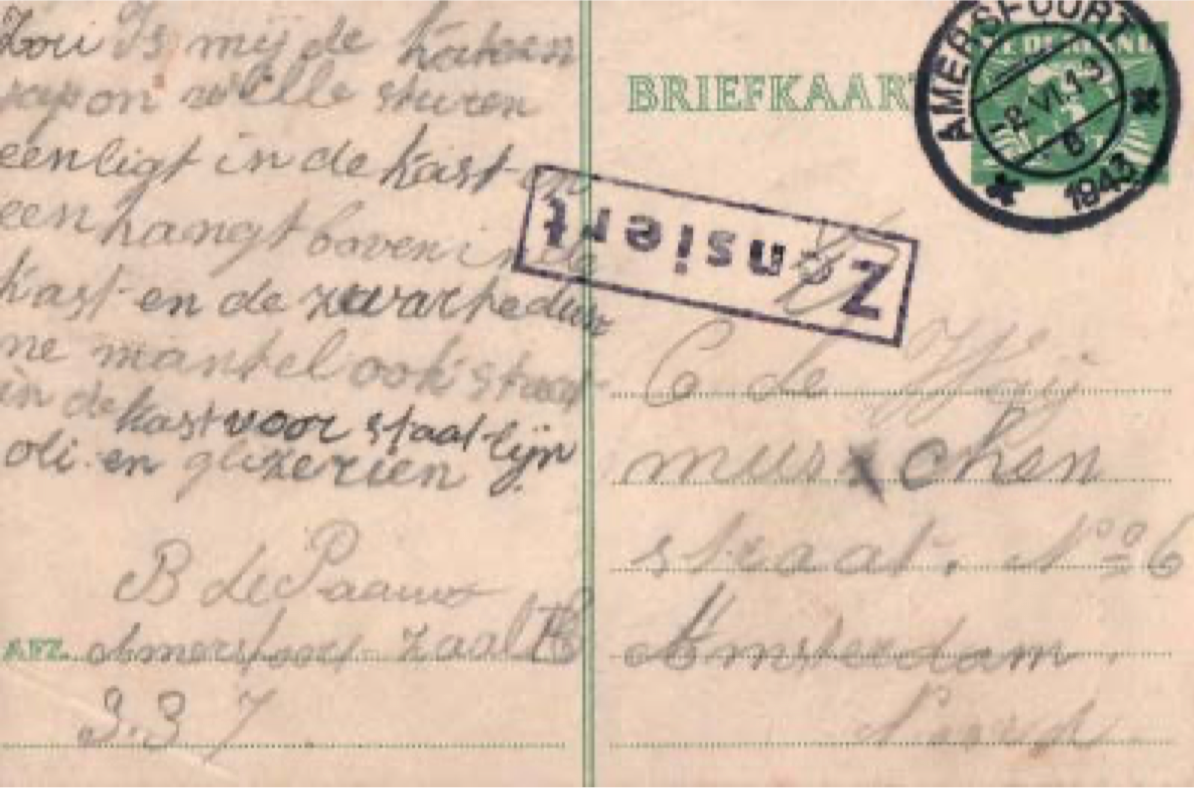
This postcard was written on May 28, 1943, and sent on June 2, 1943, from Camp Amersfoort to Amsterdam. Mail from inmates was rarely permitted. The writer was Mrs. B. de Paauw, the grandmother of Ies Cardozo, who had already been transferred to Westerbork. (See Sibella Levie-Katz)
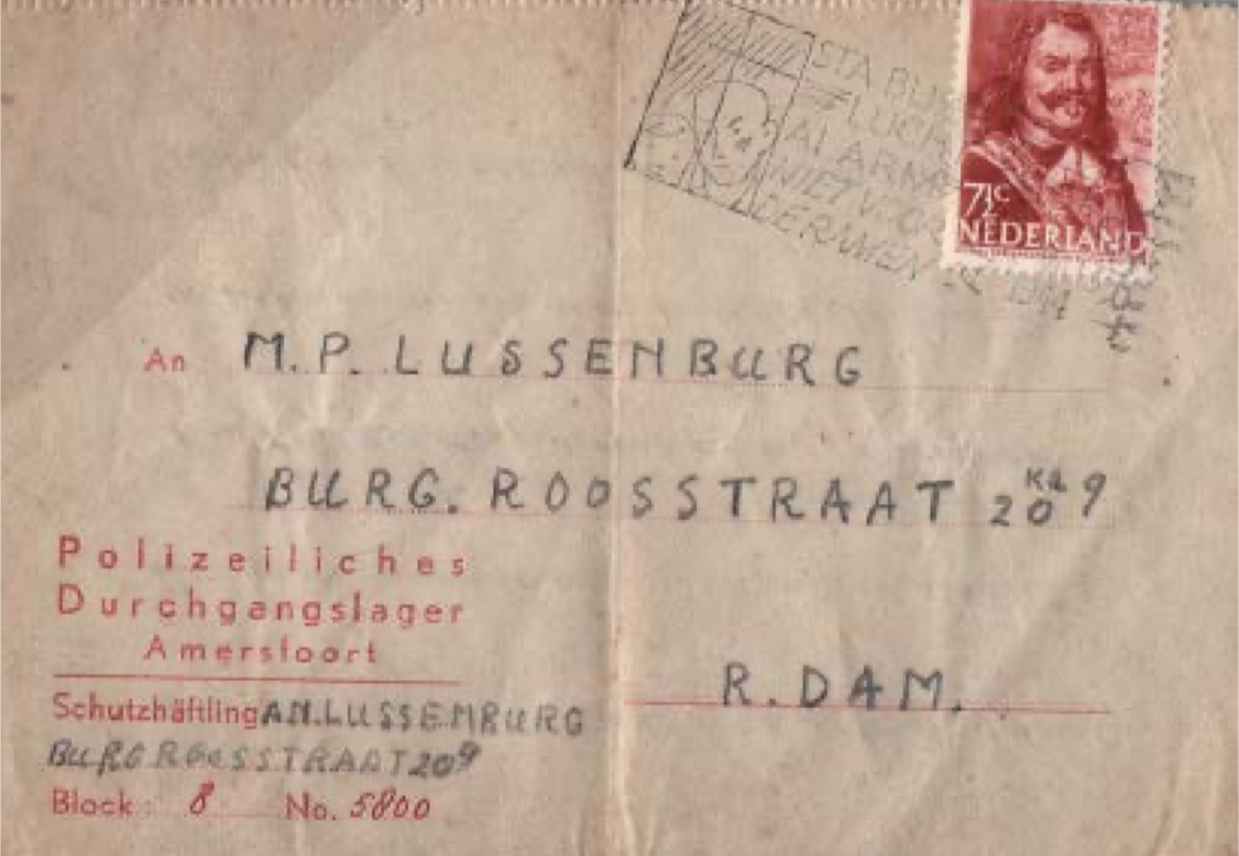
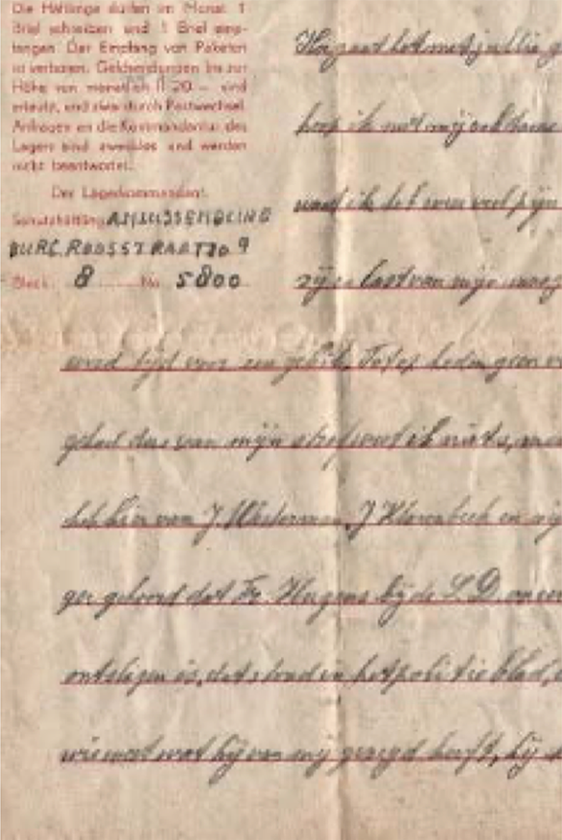
Concentration Camp Vught
Konzentrationslager Herzogenbusch
Camp Vught, located near ‘s-Hertogenbosch, was referred to by the Germans as Konzentrationslager Herzogenbusch. Unlike Camp Westerbork, which was controlled by the Security Police, the Sicherheitsdienst (SD), Camp Vught was controlled by the SS Headquarters of the Economic Administration in Berlin. Mail was mostly limited to thank-you notes for parcels received by inmates, and they almost always received censorship markings. Special letter forms could be purchased for 12 ½ cents. After censorship was carried out by an SS man located at the camp’s postal station, the mail was then taken to ‘s-Hertogenbosch and cancelled at the town’s post office. Camp Vught closed in late September 1944 when the Allies liberated southern Holland during Operation Market Garden.
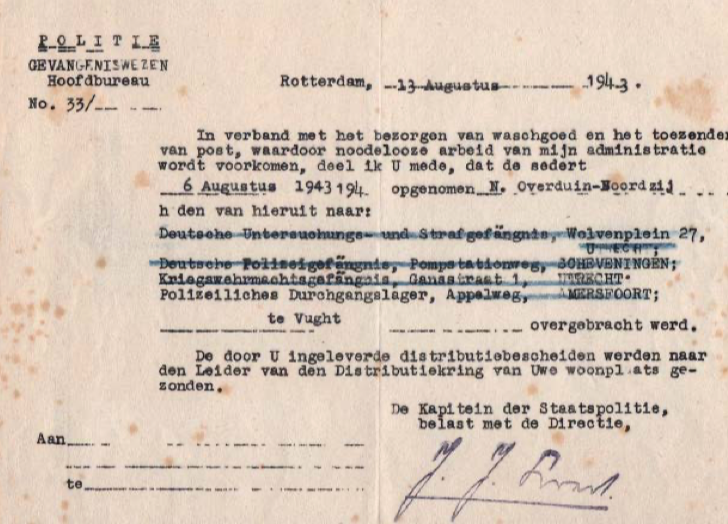
In connection with the delivery of laundry and forwarding of mail, whereby unnecessary labor by my administration is prevented, I hereby advise you that N. Overduin Noordzij, who has been held here since August 6, 1943, has been transferred from this location to Polizeiliches Durchgangslager (Police Transfer Camp) Vught.
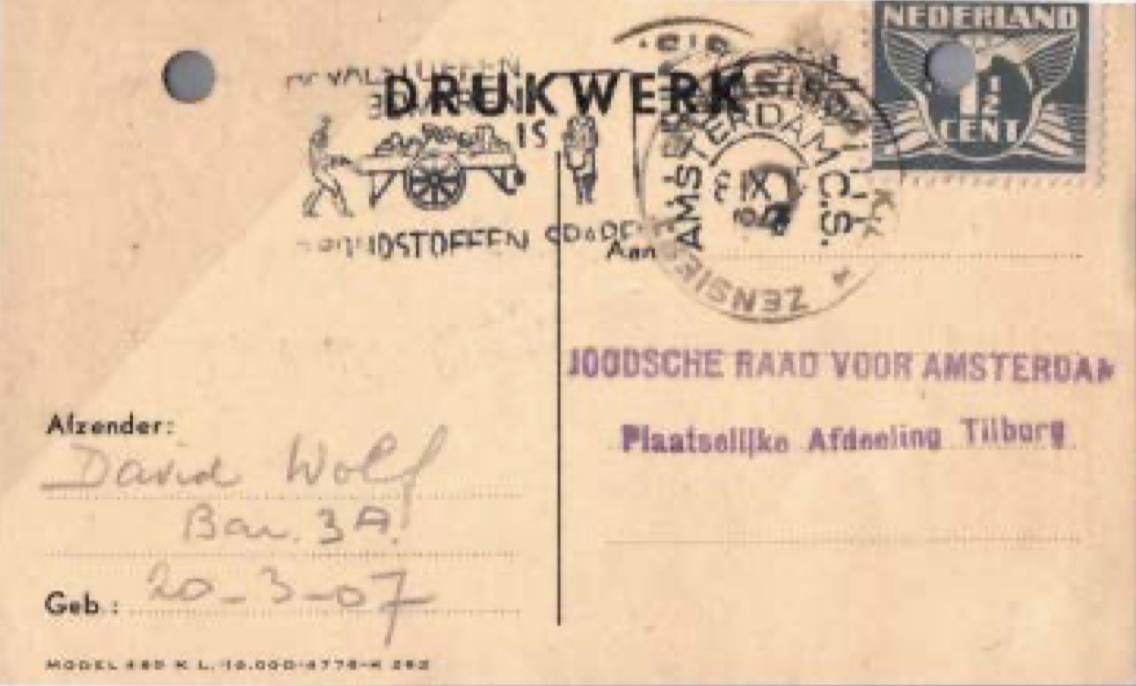
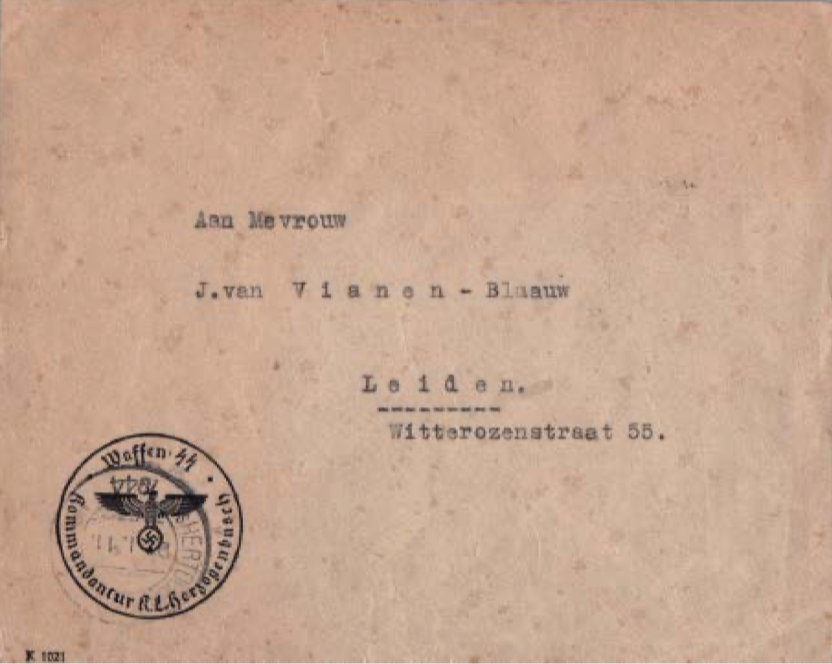

Gestapo Prison Scheveningen
Konzentrationslager Herzogenbusch
The Scheveningen penitentiary had housed minor criminals since 1919. The Gestapo had other ideas. From the start of the German occupation, the Scheveningen prison was used to house and interrogate resistance fighters and political prisoners, who, together with communists and Jews, were routinely tortured and murdered. The prison soon acquired the nickname the “Hotel Orange” reflecting many of the inmates’ allegiance to the House of Orange, the Dutch royal family, who had escaped to England.
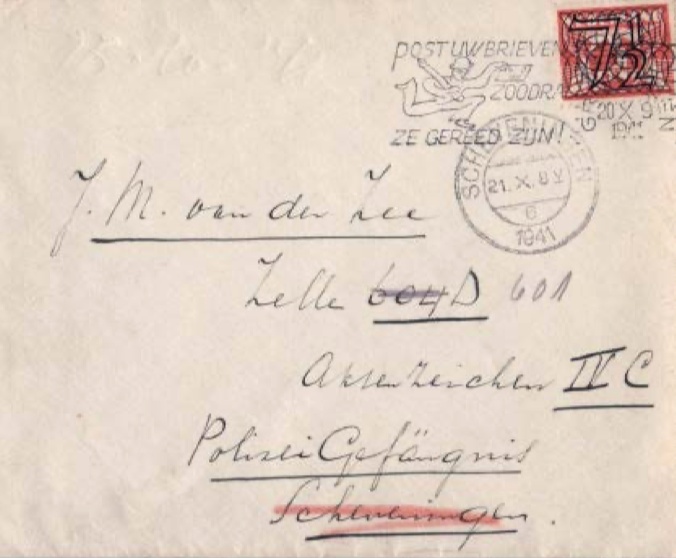


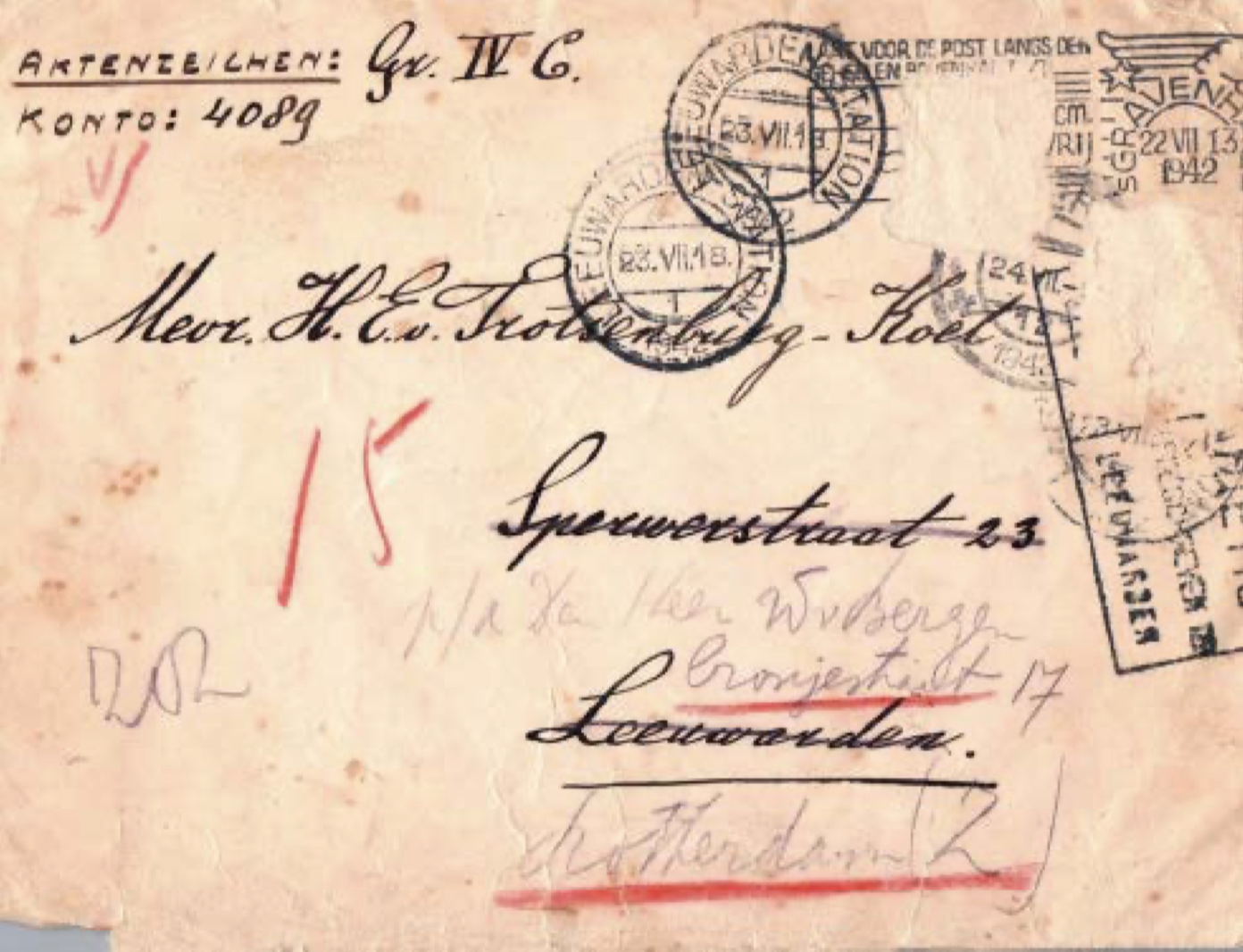

German Investigation and Punishment Prison – Utrecht
Imprisonment

The Germans took over the City of Utrecht’s prison and renamed it Deutsches Untersuchungs und Strafgefängnis, German Investigation and Punishment Prison. It housed captured resistance fighters and political prisoners and was controlled by Seyss Inquart, the Reich Commissioner for the Occupied Netherlands. His handstamp is placed on the card. The original address in Scheveningen was blocked out and replaced by “Utrecht”.

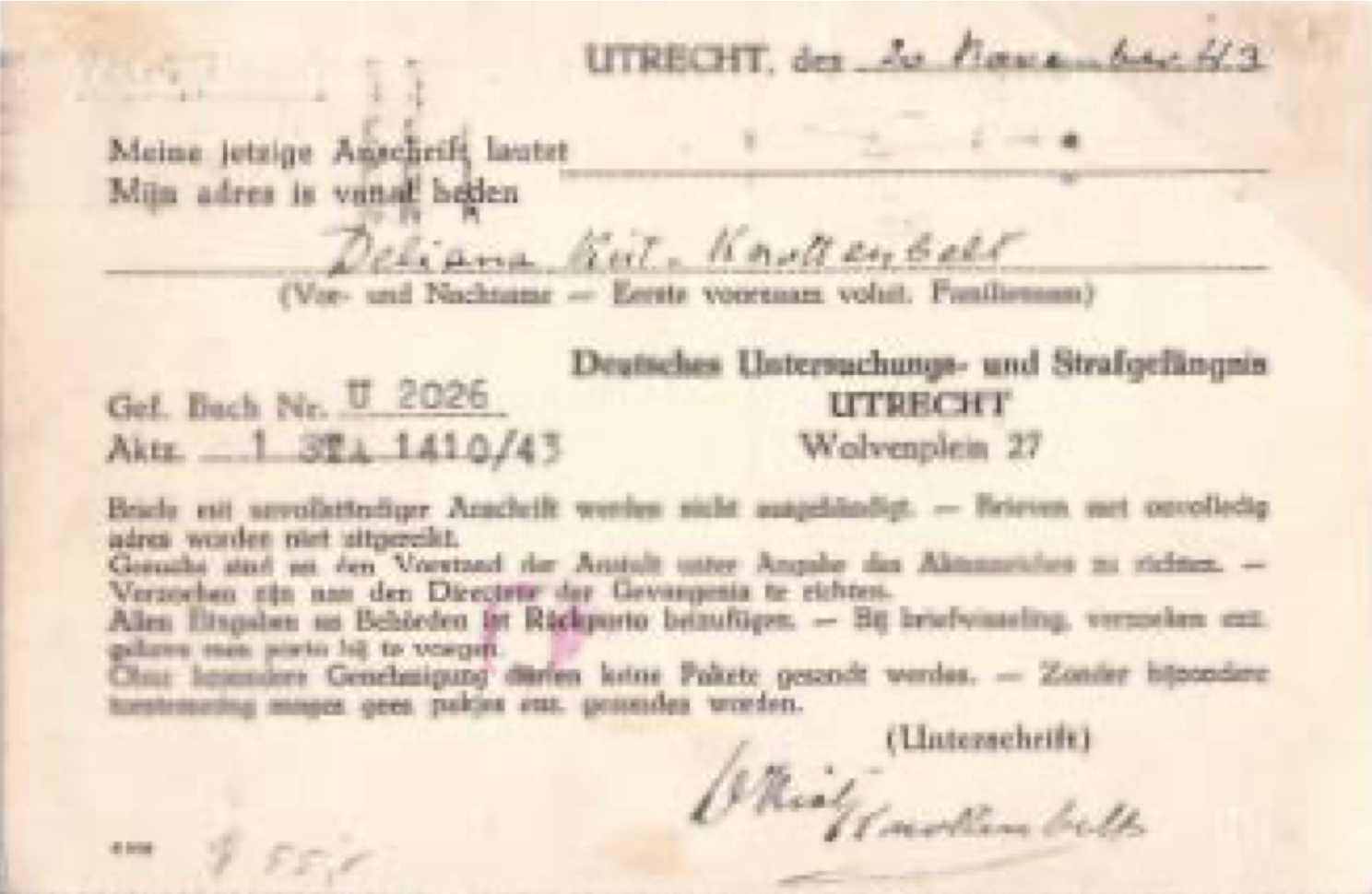
Letter with insufficient address will not be handed out and with letter exchange, etc., kindly enclose postage.
(These instructions were in contradiction of the Geneva Convention which granted POWs, internees and other categories with an exemption from paying for postage.)
